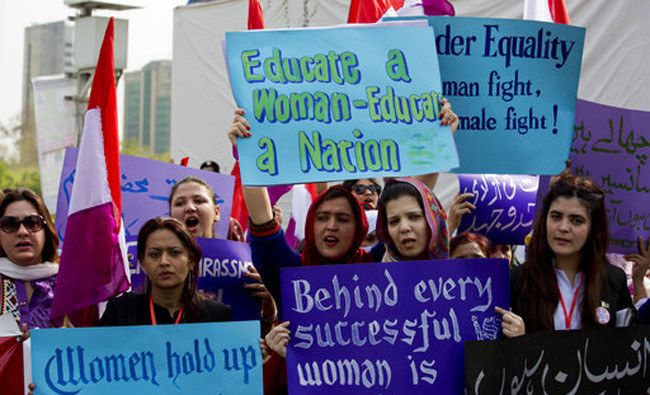Quaid-e-Azam Muhammad Ali Jinnah, Islamia College for Women, Lahore, 25 March 1940
“I have always maintained that no nation can ever be worthy of its existence that cannot take with them their women.
No struggle can ever succeed without women ever participating side by side with men. There are two powers in the world. One is represented by the sword and the other by pen. There is great competition and rivalry between the two. There is a third power stronger than both. That is the woman.”
Complete gender equality is one of the 17 Sustainable Development Goals (SDGs). According to the United Nations Department of Economic and Social Affairs, due to the global crises, climate change, and escalating gender gaps, no country has achieved gender equality, even though women and girls make up half of the population.
Sustainable development targets are unlikely to be met by the 2030 deadline. The covid-19 pandemic, conflicts, climate change, and other global challenges are worsening the gender gap. At the current rate of progress, it may take 286 years to ensure that women and girls have the same rights and protections as men.
According to the Women, Business and Law Report 2022, 2.4 billion working women do not have access to equal economic opportunities, and 176 nations continue to place legislative obstacles that limit their ability to participate in the economy. Ninety-five countries do not guarantee equal pay for equal work, and women are subject to job limitations in 86 of those nations. In the world today, women still only have 75 percent of the legal rights that men enjoy, which results in an overall score of 76.5 out of 100, reflecting the struggle for legal equality. However, 23 countries changed their legislation in 2021 to take more equal measures to improve women’s economic involvement, even though the worldwide covid-19 pandemic had disproportionately adverse effects on women’s lives and earnings.
How far along is Pakistan in reaching one of its 17 SDGs about gender equality?
Before this year’s floods, Pakistani women had been facing issues related to reproductive health. In the South Asia region, Pakistan had one of the highest maternal mortality rates. With political unrest and economic hardship following, it appears that the gender gap will continue to widen because of past and present ongoing issues.
Pakistan has been experiencing several emergencies and is in an unpredictable condition. Our behaviour, exploitation of the environment, disregard for equality, and the right to basic healthcare are impacting not only economic growth but also our credibility.
But many people are unaware of the current situation in Pakistan, a flood disaster in which at least 650,000 pregnant women and girls are among the millions of individuals who are severely affected. Of these, 73,000 women are expected to give birth in the coming months, and many of these women lack access to the healthcare facilities and support they need to deliver their children safely.
Without a doubt, floods in Pakistan would cause severe famine and widen gender disparity against women and girls, who are now facing a lack of access to basic and individual human rights. This would undoubtedly result in a regression in women’s lives, and situations here would become significantly worse than in other nations.
Pakistan was already among the worst four nations worldwide in female development metrics even before COVID-19, and the situation did not change even after the pandemic. In the Global Gender Gap Report 2022, Pakistan was ranked 145th in a survey of 146 countries.
In the ‘Regional Highlights of South Asia’, Pakistan has a population of 107 million women who have only two-thirds of the rights of men. In 2022, Pakistan has closed its gender gap to 56.46%, causing an effect on women’s lives. In democratic areas, 12 million women have not registered as voters. 15% of women are entitled to vote but do not have identity cards, and 60% of registered women voters did not show up at the polls. One-third of women are not allowed to use mobile phones. Women hold one in ten cabinet positions, and in the last 50 years, a woman has led the country for 4.7 years. In terms of economic areas, rural areas account for 77.7 percent of informal employment, and women work unpaid in the family sector at a rate of 41.8 percent, compared to men’s 11.5 percent. Rs 500 billion is the current wage gap in Pakistan. Women hold tw percent of the top leadership and managerial posts. 32 percent of employed young women are working as paid employees, and 52 percent are unpaid family workers. 95 out of 100 women do not have a bank account, and only 4 out of 100 women get loans for agriculture. This is all recorded in the National Gender Development Framework Report 2022.
Before this year’s floods, Pakistani women had been facing issues related to reproductive health. In the South Asia region, Pakistan had one of the highest maternal mortality rates. With political unrest and economic hardship following, it appears that the gender gap will continue to widen because of past and present ongoing issues.
Furthermore, the longer we bear the concept of this destiny, the more it will cost us all. It appears that we will need a decade to stand on our own. Unfortunately, we still have a long way to go until this vision of our society is realized.























